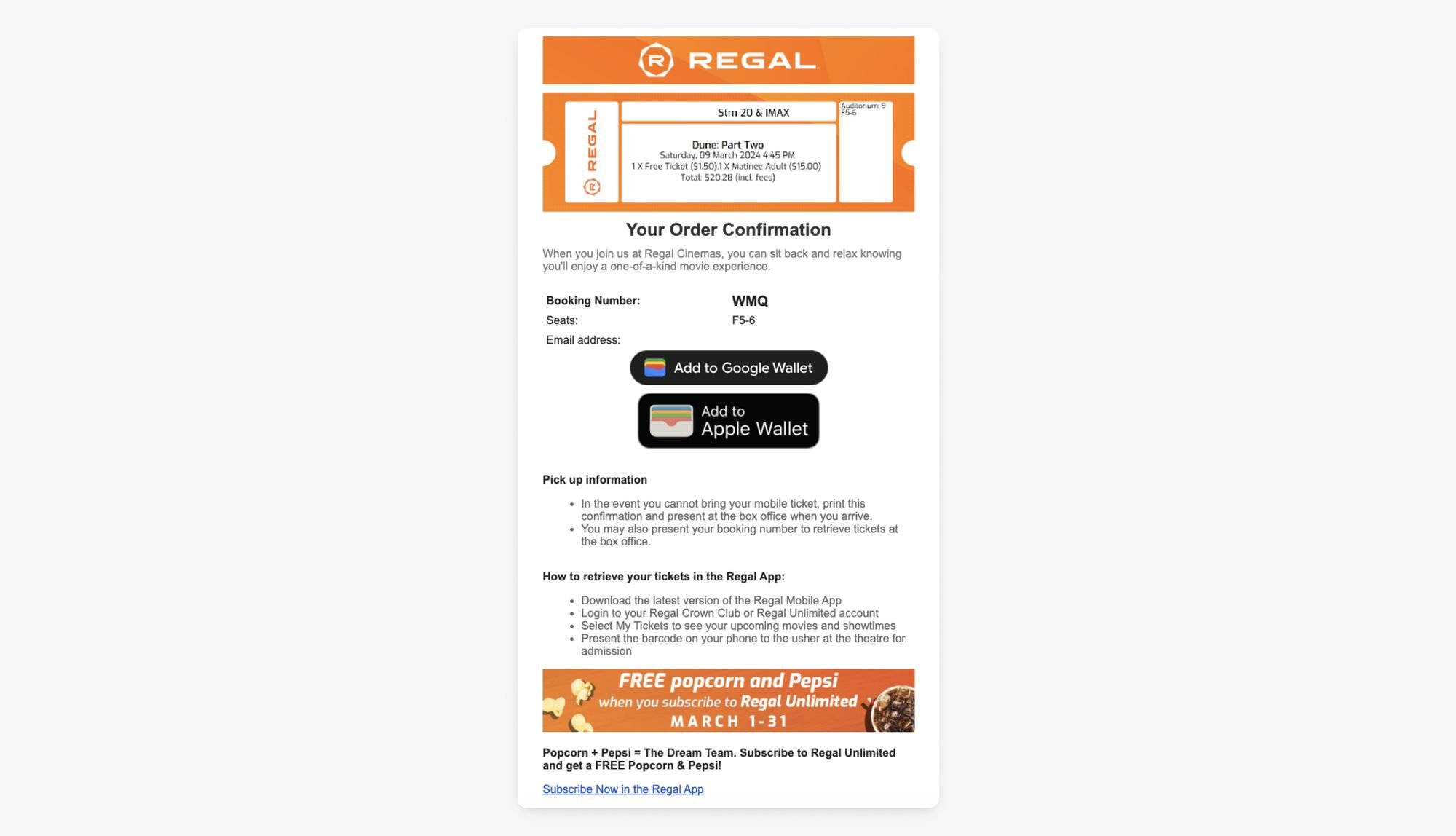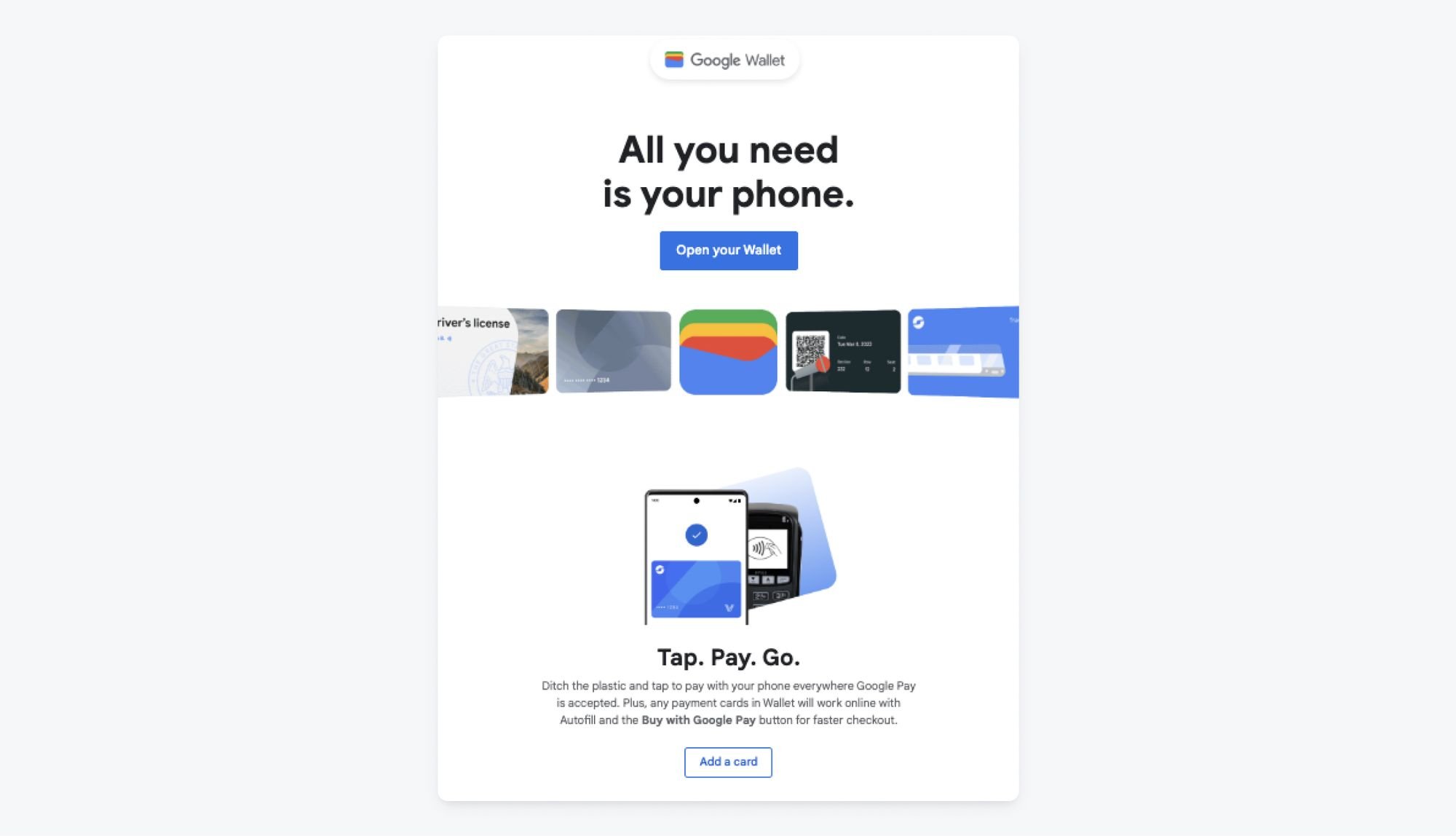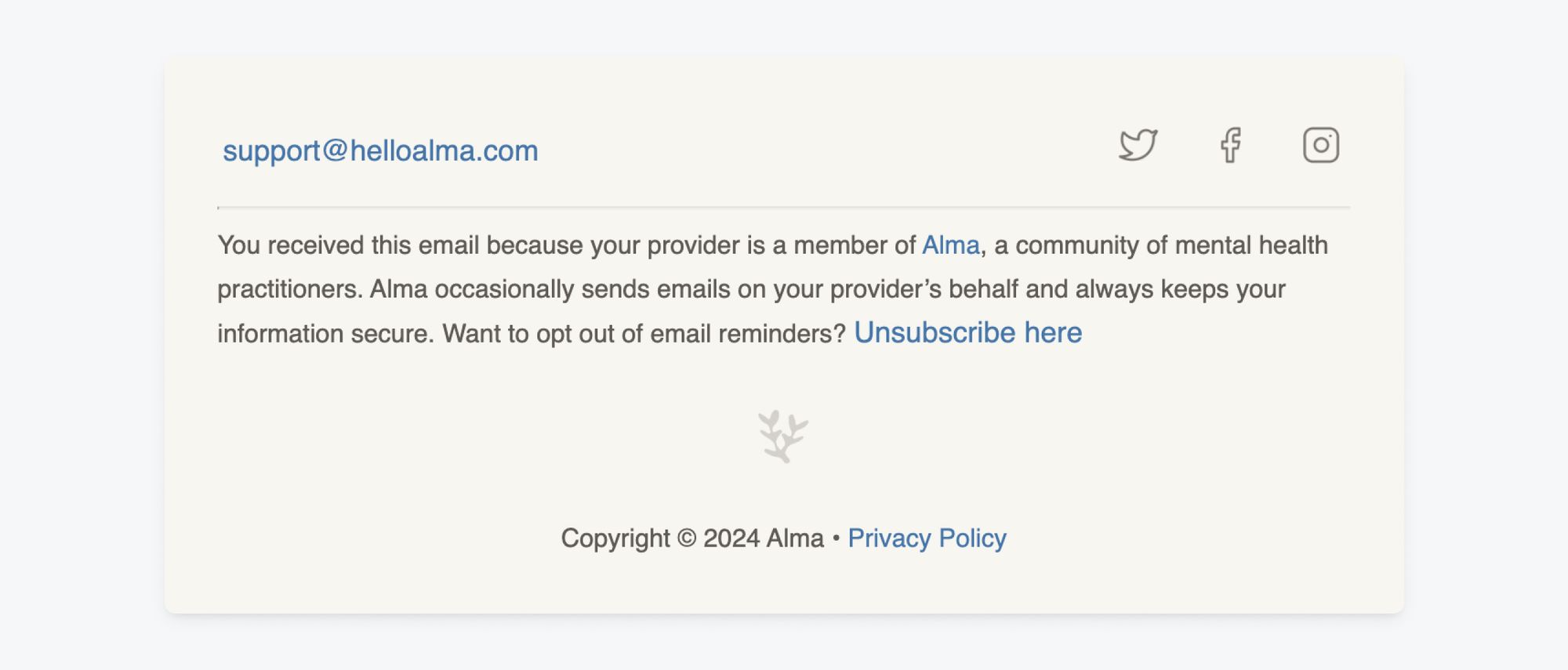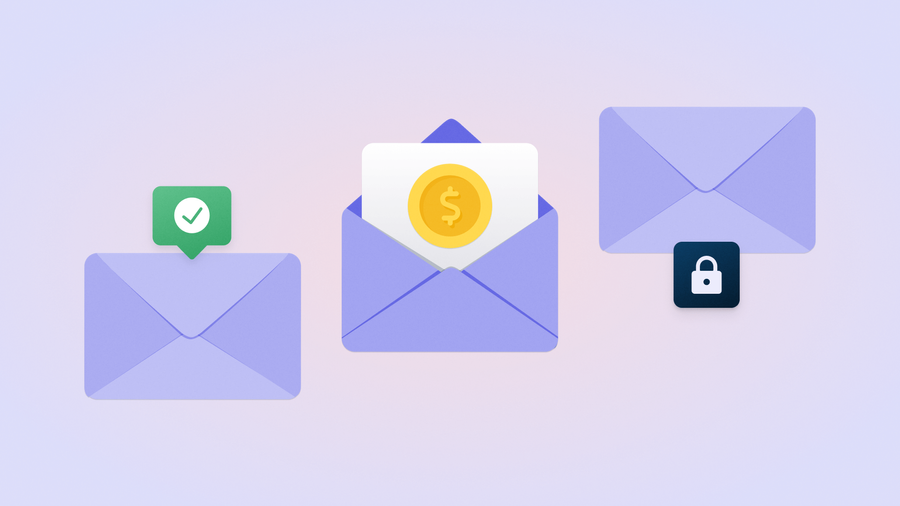A transactional email serves as a direct communication triggered by specific user actions with your business such as account registrations, purchases, password resets, or order confirmations. Where promotional emails market your product with sales-oriented email copy and incentivized offers, transactional emails are reserved for essential information only.
Within marketing, these emails are known for significantly higher open rates than promotional emails due to the fact that they deliver highly anticipated content to recipients. But what is a transactional email at its core? These messages not only enhance the user experience by keeping your audience informed in real-time, but also present valuable opportunities for you to engage with your users at critical touchpoints, fostering trust, loyalty, and driving future interactions along the way.
Transactional Emails vs. Promotional Emails
There are a handful of other important distinctions between transactional and promotional emails that you must be aware of to deliver the most impactful messages.
| Transactional | Promotional | |
|---|---|---|
| Email Content | Essential, text-based copy with minimal brand imagery |
Persuasive copy with rich visual media |
| Expectation & Timing | Immediately expected by users | Scheduled based on targeting & promotion timing |
| User Engagement | Naturally high open & click-through rates | Requires deeper personalization for engagement |
| Compliance | Implied opt-in, no need for unsubscribe link |
Requires explicit opt-in with visible unsubscribe link |
Email Content
Transactional emails contain straightforward, text-based copy with minimal brand imagery, sticking to essential information directly relevant to the user's interaction, such as account updates. For instance, if a user makes a purchase, the transactional email would confirm the order details, provide shipping information, and possibly include an estimated delivery date. The focus is on fulfilling the user's immediate need for information and ensuring a smooth transaction process.
Promotional emails focus on marketing messages, showcasing products, special offers, or brand announcements with persuasive email copy and rich visual media such as gifs, videos, or live countdown timers. The goal here is to capture recipients’ interest, encourage engagement, and ultimately drive sales. Promotional emails aim to convince the recipient to take further action beyond just providing information.
Expectation and Timing
Transactional emails are typically expected by users as an immediate response to their actions and are often time-sensitive, automatically triggered, and requiring active attention.
Promotional emails may be scheduled or sent periodically to target audiences, aiming to attract attention and drive conversions. These emails can be sent via email blast or using specific email segmentation targeting to hone in on particular user groups.
User Engagement
Transactional emails tend to have higher open rates and click-through rates (an average of nearly 5% vs. 3% for non-transactional) because they fulfill a user's immediate need for information or confirmation.
Promotional emails may face challenges with engagement if not carefully targeted or relevant to the recipient's interests. When recipients receive promotional emails that are not personalized or aligned with their preferences (as many transactional emails implicitly are by nature), they are less likely to generate opens and conversions. With the right email segmentation plan, promotional email campaigns become significantly more effective!
Compliance and Regulation
Transactional emails are often categorized differently within email compliance regulations, as they are considered necessary communications rather than marketing messages.
Transactional emails typically do not require an unsubscribe link like promotional emails do. Transactional emails are considered essential communication related to a user's specific action (e.g., purchase confirmation), and recipients generally expect to receive them (known as implied opt-in) without the option to unsubscribe — and even if they have unsubscribed from promotional or marketing emails in the past. However, any promotional content within transactional emails should include an unsubscribe option to cover your bases and comply with email marketing regulations.
Promotional emails must comply with regulations such as GDPR or CAN-SPAM Act, which require explicit opt-in consent and provide opt-out options or a user preference center for recipients to select their desired experience.
Common Transactional Email Use Cases
Transactional emails can augment the user experience in a variety of ways. The most common use cases for transactional emails include:
- Order confirmations: Sent immediately after a purchase to confirm the details of the transaction.
- Shipping notifications: Inform customers about the status of their order and provide tracking information.
- Account creation/welcome emails: Welcome new users to a platform or service and provide necessary account information.
- Password resets: Enable users to securely reset their passwords when forgotten.
- Receipts and invoices: Provide users with a summary of their purchase and payment details.
- Account notifications: Notify users about account activity, such as changes in settings, subscription renewals, or security alerts.
- Appointment reminders: Remind users of upcoming appointments, bookings, or reservations.
- Feedback requests: Solicit feedback from users about their experience with a product or service.
- Subscription confirmations: Confirm user subscriptions to newsletters, updates, or other services.
- Event registrations: Confirm registrations for events, webinars, or workshops and provide event details.
Examples of Transaction Emails
The order confirmation:

This transactional email example from Regal Movie Theaters not only includes the customers’ critical information associated with their ticket purchase but also a handful of helpful content like pick-up information. You can also see how some brands toe the line when it comes to contextually relevant events or reward programs associated with purchasing additional services with the banner at the bottom of this example.
The Welcome Email:

Transactional messages don’t always need to be reserved for purchase confirmations. The above transactional email example for Google Wallet provides a simplistic, but warm introduction with a prominent link at the top to open their app and some extra copy down below, giving users some easy ways to get started.
The Informational Lockbox:

This transactional email example from the mental health platform Alma provides a direct link to their support team to provide users with an instant line of communication to discuss their private health information. They also provide a generous disclaimer in the footer, highlighting their discretion when it comes to sensitive information and an opt-out opportunity with an unsubscribe link.
What do the Highest Performing Transactional Emails Include?
Well-designed transactional emails not only fulfill their primary function of delivering essential information but also leave a lasting impression, potentially leading to increased customer loyalty and additional sales.
When thinking about your transactional email marketing, keep the following best practices in mind to help your messages resonate and perform:
Streamlined Instructions
Many transactional emails add additional steps for recipients — try to simplify these processes to as few steps as possible to avoid confusion or frustration for your users. Ensure that the content of your transactional emails is written in clear and straightforward language. This is not the place for flowery marketing copy and overly clever headlines.
Avoid making users search for important links or actions within the email. Include direct links and clear calls to action to help users quickly access relevant information or complete necessary actions at a glance.
Open With Purpose
Your transactional email subject line should clearly reflect the purpose of the message and be relevant to the user's recent activity or interaction. For example, if it's a shipping confirmation email, the subject line could be straightforward like "Your Order #123456 has Shipped." This clarity helps users quickly recognize the email's importance and increases the likelihood of it being opened.
Preheader text also provides an additional opportunity to reinforce the subject line and entice recipients to open the email. Use this space wisely by providing a brief summary or compelling call to action that complements the subject line. For example, if the subject line is about order confirmation, the preheader text could provide additional details such as "Track your shipment now" or "Discover what's inside." This encourages recipients to open the email to find out more, fostering increased engagement.
Context is Key
Without adequate context, users may struggle to interpret your email's meaning or take appropriate action, leading to frustration and churn.
For example, consider a transactional email with the subject line "Your Account Has Been Locked." Without proper context in the email body explaining why the account was locked and what steps the user needs to take to resolve the issue, recipients may feel alarmed or anxious. They might wonder if their account has been compromised or if there has been unauthorized activity.
Say No to No-Reply
Transactional emails often require user engagement or action, such as confirming an order, resetting a password, or providing feedback. Using a no-reply email address prevents users from responding to the email or engaging further with the brand, which will lead to user account problems, missed opportunities for feedback, or additional interactions.
Instead, it's preferable to use a monitored email address that allows recipients to reply directly if they have questions or concerns. This approach promotes open communication and demonstrates that the brand values and prioritizes customer engagement.
Avoid the Email Spam Folder With Authentication
If your promotional emails become inadvertently marked as spam, it spells disaster for your email deliverability and email reputation. If your transactional emails end up in recipients’ email spam folders, you are also forcing your users into brand blindness when it comes to their personal information. These are critical communications that the future security and engagement of your users hinge on — don’t take any chances.
Set up SPF (Sender Policy Framework), DKIM (DomainKeys Identified Mail), and DMARC (Domain-based Message Authentication, Reporting, and Conformance) for authentication to improve deliverability and avoid the spam folder for transactional emails.
- SPF helps verify that an email message is sent from an authorized server. By publishing SPF records in the DNS settings, marketers specify which servers are allowed to send emails on behalf of their domain. This prevents spammers from spoofing the domain and improves email deliverability.
- DKIM adds a digital signature to email messages, allowing recipients to verify that the message was sent by an authorized sender and hasn't been altered in transit.
- DMARC builds upon SPF and DKIM by providing additional policies for email authentication. With DMARC, marketers can specify how ISPs should handle emails that fail SPF or DKIM checks, such as quarantining or rejecting them.
Ready to get started with DMARC? Check out our guide on how to set up DMARC for email marketing.
Domain Considerations
Using separate domains for transactional and promotional emails is not a strict requirement, but it can offer certain advantages in terms of deliverability and brand reputation management.
ISPs (internet service providers) may treat transactional and promotional emails differently based on sender reputation and engagement metrics. By segregating these types of emails into separate domains, you can better control deliverability factors and maintain a positive sender reputation for each domain.
Certain email marketing regulations, such as GDPR or CAN-SPAM Act, may have specific requirements or exemptions for transactional emails versus promotional emails. Using separate domains can help ensure compliance with these regulations and minimize the risk of inadvertently violating them.
Choosing the Right Transactional Email Service
Choosing the right transactional email service is crucial for ensuring reliable delivery, scalability, and compliance with email regulations. You’ll want a reputable provider who offers a robust infrastructure, advanced deliverability features, and comprehensive reporting tools to optimize email performance and keep your user engagement trending upwards.
Designing and delivering transactional emails with OneSignal is uniquely practical, especially for frustrated marketers looking for an easier way to unify their messaging channels. Our no-code drag-and-drop email editor lets you craft engaging emails that look great on every device, whether they’re informing, engaging, or doing both. We support detailed email segmentation to help you personalize and automate your campaigns at scale — and we haven’t forgotten about your existing email service provider. We support seamless integrations with SendGrid, MailGun, and MailChimp!




